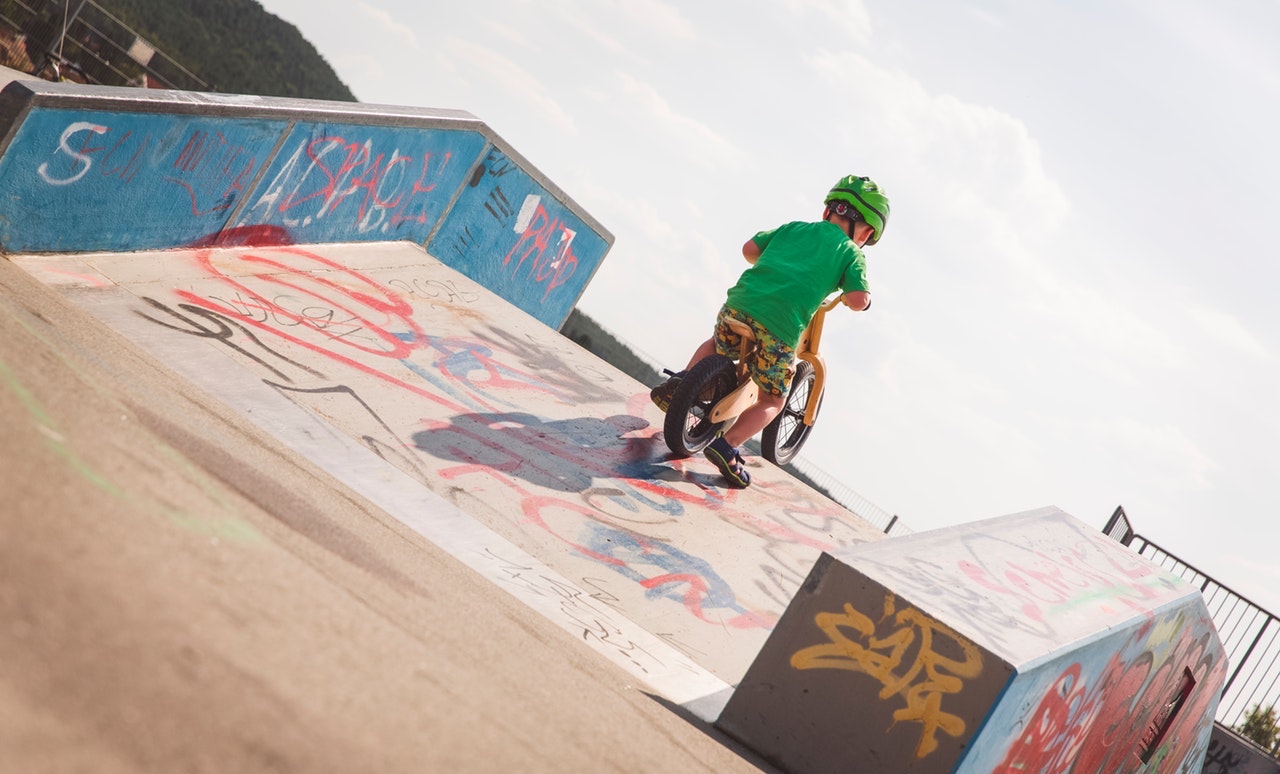Highlights
My childhood friend Joel was fearless. When he was about six, Joel’s parents installed a balcony on the back of their pole home. For some reason, the builder couldn’t install the safety railing straight away. The fall from the balcony to the ground was at least 18 feet.
Joel would ride his bike full tilt along the balcony, then execute a perfect skid. His mission? Get as close to the edge as possible. He never did go over, though his bike did at least once!
Some kids are thrill-seekers. While their friends stay away from heights, roads, stovetops, and other dangers, the Joels of the world get a buzz out of risky business. Maybe you have that two-year-old that tries to "fly" off the back of the couch, the three-year-old who cleverly picks the childproof lock on the cupboard of poisonous cleaning supplies, or the four-year-old who lets himself out the front door to take the dog for a walk.
These kids are independent, spirited, goal-oriented and resourceful—but parenting a fearless child can be a daunting and stressful task.
Between the ages of about one and five, your child develops new abilities and starts to crave independence. This is healthy. Independence contributes to feelings of well-being, a sense of identity, and helps promote self-esteem.
In some ways, our young children are similar to teenagers. In both stages, our kids are in the process of "individuation"—they are learning about difference, separation, and self-assertion, and they have an absolutely unshakeable belief in their own invincibility. But unlike a teen, your young child can’t foresee the consequences of his actions. (Some of us would recognize that even teens struggle with this skill at times, too.)
As such, there are dangers inherent in having a risk-taking child. A fearless, intense, highly-motivated child can be difficult to keep safe. Our job as parents is to find a way to keep our fearless kids safe while still allowing them to explore the world.
What do we do?
First, try reframing the situation.
There are benefits to having a fearless child. You might change your language from "stubborn" to "persistent," or "reckless" to "goal-oriented." Perhaps your child is "optimistic"! This reframe emphasizes your child’s strengths. Our children internalize our language about them. And so do we. Choose positive words to describe your child’s spirited ways.
Next, modify the environment for safety.
Sometimes, things are just not going to be safe, and you’ll need to find an innovative solution. I know one family whose two-year-old was intent on climbing the cable railing on their deck. They installed pieces of Perspex (or plexiglass) to stop him. Another mother learned to keep her car keys hung from a nail high up on the wall.
Remember, however, that kids have been navigating risks for millennia. They don’t need to be bubble-wrapped.
A fearless, intense, highly-motivated child can be difficult to keep safe.
Encourage them to take risks in ways you can feel good about. Bike slides beside a rail-free balcony may be a bit much, and we want to minimize true danger, but giving kids the freedom to explore and take risks is good for them. Evidence shows they become wiser when we allow them to engage in risky play. They become more effective risk assessors.
According to Peter Gray, globally recognized play expert, when playing, most children take risks and that is helpful:
They seem to be dosing themselves with moderate degrees of fear as if deliberately learning how to deal with both the physical and emotional challenges of the moderately dangerous conditions they generate. All such activities are fun to the degree that they are moderately frightening. If too little fear is induced, the activity is boring; if too much is induced, it becomes no longer play, but terror. Nobody but the child himself or herself knows the right dose.
Paranoid parenting and the desire to protect children from themselves come with a cost. They may be safe here and now, but they lose out on the opportunities to grow resilient, understand the world, assess risk, and develop through their challenges when we step in and coddle. It is arguable, if not demonstrable, that parental hyper-concern is actually increasing the fragility of our children. To be sure, as Norwegian researchers Ellen Sandseter and Leif Kennair found in their 2011 study on children’s risky play:
Research has shown that anxious children may elicit overprotective behavior from others such as parents and caretakers, and that this reinforces the child's perception of threat and decreases their perception of controlling the danger. Overprotection might thus result in exaggerated levels of anxiety.
Joel survived. So did the kid who let himself out the front door to walk the dog and the child who learned to fly from the back of the couch. They all survived.
Of course, we need to keep our fearless kids safe, but what a shame it would be if in doing so we also kept all the adventure from their lives (and ours)! Embrace their intense spirits, their clever problem solving, and their focused goal-setting. Just be sure to keep the car keys out of reach.
Dr. Justin Coulson is a bestselling author, husband, and father of six. His new book is 10 Things Every Parent Needs to Know.
Editor’s Note: This article originally appeared on the Happy Families blog. It has been reprinted here with the author's permission.










